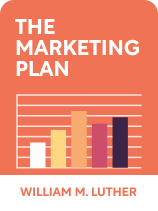

This article is an excerpt from the Shortform book guide to "The Marketing Plan" by William Luther. Shortform has the world's best summaries and analyses of books you should be reading.
Like this article? Sign up for a free trial here .
What are the three phases of the product life cycle? How can understanding these phases help you tailor your marketing strategy?
After calculating your target market’s size and ideal market share, you need to understand what happens to products in the product life cycle. This cycle starts when a product is introduced to consumers and ends when it’s removed from the market.
Read on to learn how William M. Luther explains the phases of the product life cycle in his book The Marketing Plan.
Product Life Cycle Phases
Luther argues that understanding the phases of the product life cycle and growth rate will help you predict two things about the market you intend to enter: First, if demand for your product or service is currently on the rise or in decline. Second, what operational procedures you’ll need to focus on to maximize your profits.
According to Luther, every market moves through three stages that reflect the amount of consumer interest (the market size) in a particular type of product or service: introductory, early growth, and late growth to decline. Let’s explore how entering the market during each of these three stages impacts your venture’s success.
Life Cycle Stage #1: Introductory
During the introductory stage, a new product or service enters the market. The market size is small since customers are not yet aware of this commodity. Luther argues that businesses that enter the market at this stage benefit from fewer competitors. This gives them the chance to dominate the market as consumer interest grows.
However, there are risks involved since not every new product or service gains enough traction to enter the next stage. According to Luther, businesses should only enter the market during this stage if they can afford to make a loss. They should also have resources to spare for research and building customer awareness for new products and services.
Life Cycle Stage #2: Early Growth
Once a product or service gains enough traction, it benefits from growing consumer demand—thus, the market size increases. As a result, businesses increase production and the commodity becomes more widely available. Luther argues that companies that wait to enter the market until it’s experiencing a growth rate of five to 25% a year benefit from fewer risks—they save money on research and development because they just need to copy or improve upon the existing commodity.
(Shortform note: Luther suggests that the best time to enter a market is when it’s at a growth rate of five to 25% per year, but he doesn’t elaborate on how to figure out whether your desired market falls within this range. Business experts clarify how to determine the growth rate of a market: First, find the market size for at least two successive time periods—for example, year one and year two. Subtract the market size for year one from year two. Then, divide the result by the market size for year one and multiply by 100 to convert the result to a percentage. For example, if the market size was 100,000 in year one, and 125,000 in year two, you would calculate the growth rate as follows: (125,000 – 100,000) ÷ 125,000 x 100 = 20%.)
However, by this time, customers are already familiar with the businesses that introduced the original commodity. Therefore, businesses entering this stage can only gain market share by taking customers away from existing competitors. This requires a heavy investment in branding, advertising, and sales.
Life Cycle Stage #3: Late Growth to Decline
By this point, the product or service is widely available and the leading competitors have established themselves. Many consumers have bought a version of the commodity and are now attracted by innovative alternatives that offer new and improved features. For example, when people stopped buying cassettes in favor of CDs. As a result, the market size reaches its peak and then begins to shrink.
Luther argues that businesses should avoid entering the market at this stage due to two major obstacles: The market is saturated with competitors that are too strong to outmaneuver—because they’ve optimized business operations and benefit from lower costs—and it’s too difficult to revive consumer interest.
(Shortform note: Business experts expand on what Luther says about shrinking markets by explaining that, by this point, established businesses have already given up on increasing their profits in the existing market. Instead of attempting to fulfill customer needs, they’re more focused on reducing their inventory as quickly as possible so that they can allocate their resources toward releasing the next big thing. One way they achieve this is by slashing their prices so low that it’s impossible for new competitors to outmatch them. Therefore, as Luther argues, it won’t be profitable to enter the market at this stage.)

———End of Preview———
Like what you just read? Read the rest of the world's best book summary and analysis of William Luther's "The Marketing Plan" at Shortform .
Here's what you'll find in our full The Marketing Plan summary :
- How to build a team and motivate them to work together
- How to hire the right people—and keep them
- How to share and reinforce your vision






